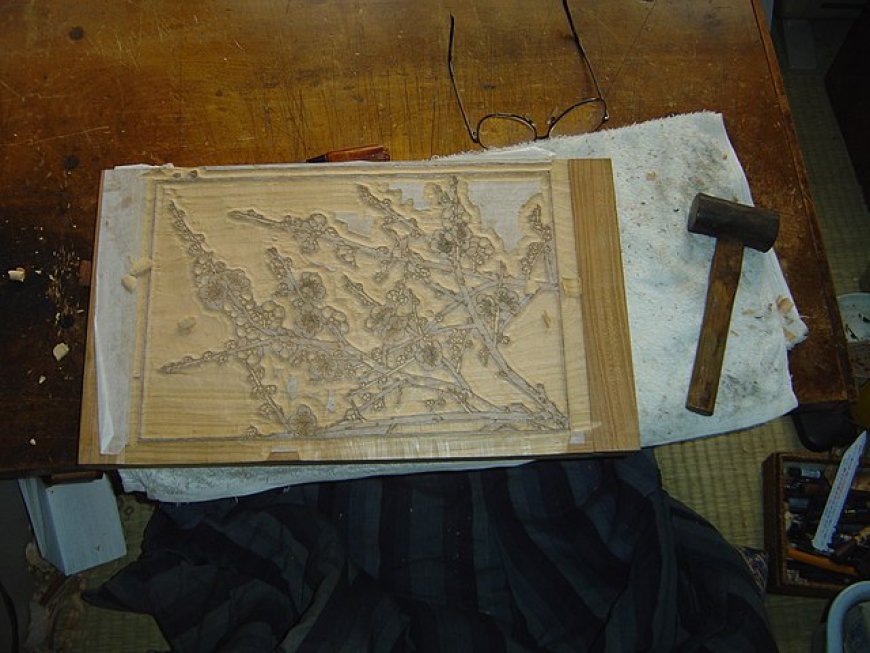The art of wood carving Ukiyo-e
If you have ever set foot in Japan, you must have seen Ukiyo-e, also known as relief paintings, a type of traditional woodblock painting famous in many forms of Japanese art Sunrise.

What is Ukiyo-e?
Ukiyo-e is a Japanese art of woodblock prints born between the 17th and 20th centuries, depicting themes of landscapes, historical stories, and great theaters. amusement parks. The theme in Ukiyo-e is often that of enjoyment, with the main scenes taking place in theatres, restaurants, and teahouses, and the protagonists are usually prostitutes, actors, geishas or sumo...
The process of finishing a Ukiyo-e
A Ukiyo-e print that wants to be completed must go through a lot of stages. Traditionally, it takes at least three people to complete a piece. First, the artist has to draw an original in black ink (sumisen). People rely on that to create hanshita.
This copy will then be glued face down by the horishi engraver to a piece of wood and cut off the white parts, leaving the inverted painting on the slab called a sumiita. It is used to print black borders. The first copy, called the kyogo-zuri, will be given to the artist for final checking and finishing touches.
If it is a black and white picture, then this can be considered complete. If it is a color painting, the work has only just begun. The iroita panels were created based on this woodblock, each using a color patch of the painting. Surishi paints the pieces of wood under the supervision of the artist before they are put to use. The principle of color printing is to go from light colors to darker colors and from small patterns to large patterns.
Today, Ukiyo-e paintings are sold a lot on the streets of Japan, becoming souvenirs loved by tourists. The fascination of tourists from all over the world with this art form has contributed to saving the Japanese woodblock art of Ukiyo-e from such extinction.
--------------------------
Injavi.com - Visit in Japan

























































































